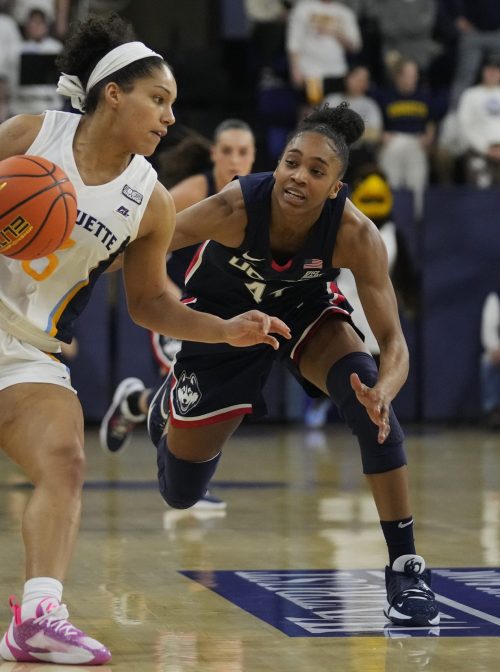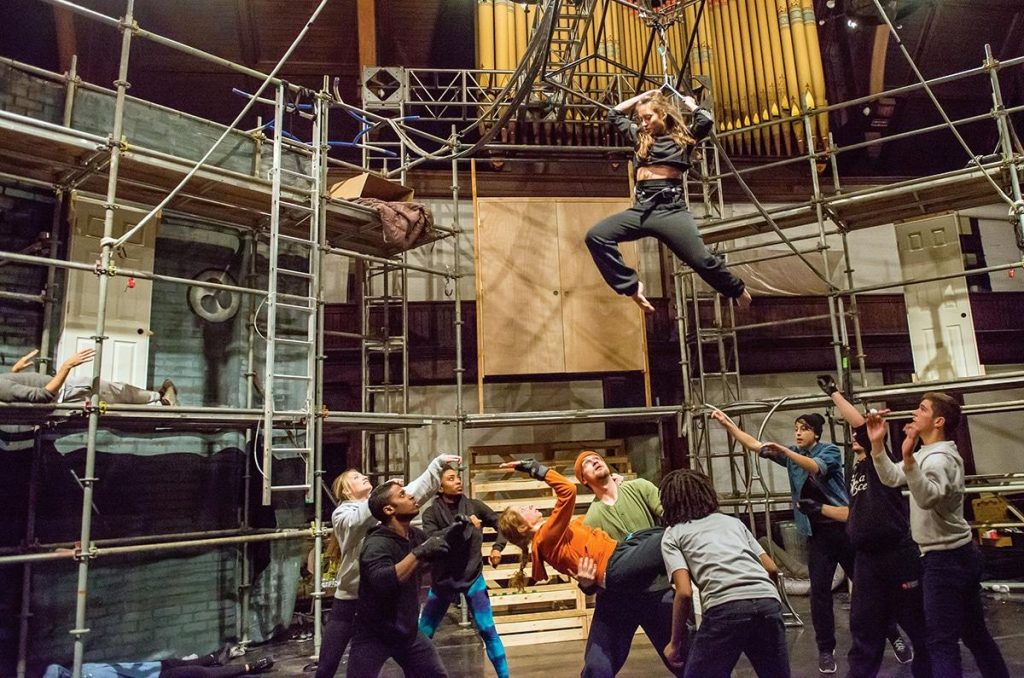(Chronicle of Philanthropy) — In academic year 2019-20, the student body at Texas A&M University was only 3 percent Black. By any measure, that’s an abysmal diversity failure.
So what should you do if you are a leader at Texas A&M and you want your department or school to increase its percentage of Black students, especially now that the Supreme Court has struck down affirmative action?
Turns out there’s a program on your campus where nearly 93 percent of the students are Black. It’s highly prestigious and extremely selective. Thousands want to get in, but only a few are admitted.
That program? Women’s basketball.
If you care about elevating Black women, I suggest you head over to a women’s basketball practice and ask them what they’re doing right.
In my inaugural column, I promised to take a bright-spots approach to social change. When it comes to the inclusion of marginalized people of color, the numbers demonstrate that we in the philanthropy/nonprofit/academic world can learn a lot from athletics.
Bright spots don’t have to be perfect for us to find them useful. Sports certainly are not.
And, just to be clear, I’m in no way suggesting that the athletic model should be uncritically imported into other fields.
Nor am I speaking from experience. I wasn’t smart enough to be an elite athlete.
I’m only highlighting the other side of the coin of the critique that goes like this: Spaces where Black people are dramatically underrepresented, such as law firms — where only 2.2 percent of partners at the nation’s largest firms are Black — must have something wrong, perhaps even racist, in their culture.
There’s a logic to that argument. And if we extend that logic, we get to this: Spaces where Black people are dramatically overrepresented just might be getting something right with their culture.
Well, in the 2019-20 academic year, Black students made up less than 6 percent of the population of colleges in the Power Five — the five richest and most prominent conferences in college football. However, they made up 48 percent of the student athletes on women’s basketball teams, and more than 55 percent of men’s football and basketball teams.
The numbers are even better at the professional level. Fully 72 percent of NBA players and 56 percent of NFL players are Black.
Pick a profession that you admire — philanthropy, medicine, journalism, education, law — and imagine if 70 percent of the professionals were Black.
It’s worth noting that sports were arguably even more overtly racist than other fields in mid-20th century America. The University of Alabama, a perennial college football power, graduated its first Black students in 1965 but did not have a Black player in a game until 1971. The Crimson Tide would not even agree to play an integrated football team until the 1959 Liberty Bowl.
In 2022, the vast majority of Alabama’s starting lineup, including all of its captains, were Black. Every single one of the university’s Heisman Trophy winners has been Black.
When it comes to the racial inclusiveness of elite athletics, things have changed significantly for the better.
I’m a supporter of affirmative action and believe the Supreme Court decision will profoundly harm diversity efforts. I think affirmative action is important for all the standard reasons most liberals support it. Representation matters. Historic discrimination requires some form of redress, and affirmative action is one legitimate tool in the tool kit. Contemporary racism is still too often a barrier to achievement. Diverse teams produce better results, and diverse environments enhance learning. It’s a familiar list.
Bottom Up vs. Top Down
But I think it’s better if diversity goals are achieved through bottom-up rather than top-down means. University of Alabama admissions officers don’t contact head football coach Nick Saban and tell him to increase the number of Black football players. Coach Saban is part of a field in which athletes who are Black simply perform better than others.
It’s noteworthy that sports is a sector in which the standards are consistent across the board. The basket is 10 feet high, and the football field 100 yards long — for everyone.
While putting this column together, I’ve had dozens of conversations with people in both the academic and nonprofit worlds about sports and diversity. Frankly, I’m shocked by the bias people demonstrate on this issue.
Here’s one frequent comment: “But Black people aren’t playing quarterback or put in other leadership positions.”
One-third of the quarterbacks who started on opening day in the 2022 NFL season were Black. All three quarterbacks drafted in the first round of the 2023 NFL draft were Black. And there are more Black than white head coaches in the NBA.
Another frequent comment: “But people don’t care about Black students graduating.”
In fact, 84 percent of Black student-athletes on the University of Alabama football team graduated last year.
“But people make so much money off of athletes.”
Yes, and people make money off of lawyers, investment bankers, consultants, and doctors, too. That’s just what happens in America.
The overall vibe seems to be that the significance of athletics should decline in our esteem because Black players, and increasingly Black coaches, dominate.
Well, 60 years ago, white people dominated sports. And then the racist barriers were dropped, the standards stayed the same, and Black people soared. To my mind, that elevates, rather than lowers, the importance of sports in our culture.
It’s noteworthy that the mass influx of Black athletes into elite sports happened during the 1970s and 1980s, the same era in which players started making real money and lucrative endorsement deals became widespread.
Philanthropy’s Biases
Some of the bias against sports among the fancy degree crowd that dominates philanthropy circles is a bias toward the mind over the body. If that’s the case for you, I have good news.
Virtually every elite athlete is probably smarter than you are. Not only do they have to memorize a complex playbook but they also must absorb the plays so fully into their neurons and muscles that they can perform them in a thousand different permutations, switching from one to another at the drop of a dime, with a defense intent on stopping them, in front of tens of thousands of screaming people and millions more on television.
I couldn’t do my job under those circumstances. Could you?
No wonder Venus Williams said that the mental part of sports was just as important as the physical part.
By the way, as much as I respect great scientists, philosophers, and, yes, foundation presidents, it’s athletes who inspire kids and ball clubs that bring cities together. Sports is arguably the most culturally important endeavor in our nation — and Black people are overrepresented in its most visible ranks.
We should rejoice in that, inquire into its special sauce, and see if we can apply it to other sectors.
So what’s my theory about that special sauce?
Let me just say that I’m no expert, and I think this question deserves serious inquiry and widespread conversation. Foundations should sponsor research on this issue. Philanthropy leaders should be asking each other why all their anti-racist work hasn’t achieved anything close to the results on sports fields.
As a travel sports dad who has watched hundreds of games and practices, I can offer my own observations:
Sports is all about the articulation of aspirations and the lining up of talent and effort to achieve them. The culture of sports expects excellence and inculcates respect for the game, your team, and the other team. It takes for granted that any energy spent on talking about the barriers to success is better spent on working toward being successful.
In other words, it’s pretty good preparation for life.
Read the original article.




